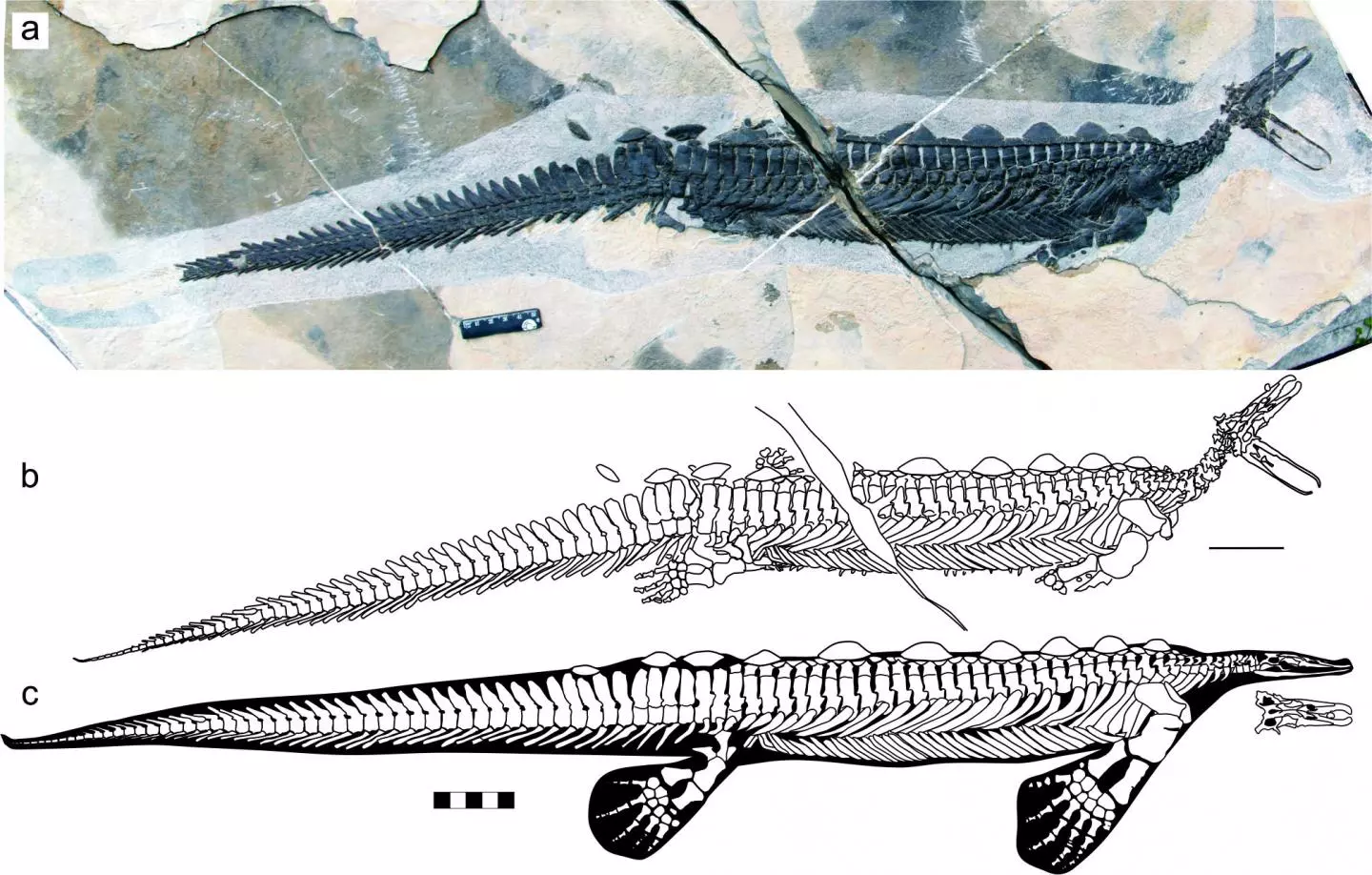Although the modern-day platypus may seem like a real oddball of an animal, it turns out that a prehistoric reptile had some of the same key features. Like the platypus (which is a mammal, albeit one that lays eggs), Eretmorhipis carrolldongi had small eyes, four flippers, and a flexible duck-like bill.
Paleontologists have actually known of Eretmorhipis since 1959, although their knowledge of the creature was based on fossilized skeletons that lacked skulls. Recently, however, the Wuhan Centre of China Geological Survey discovered two skeletons with skulls, in China's Hubei Province. The remains date from the early Triassic epoch (about 251 million years ago), at which time the region was covered by a shallow sea.
Based on an analysis of the bone structure of the skulls, an international team of scientists has concluded that they once supported flat cartilaginous bills – there are no fossils of the bills themselves, as cartilage doesn't fossilize.

Platypus bills are filled with receptors, which allow the animals to detect prey in low-visibility muddy streams via the sense of touch. Given that platypuses therefore don't rely much on the sense of sight, their eyes are relatively small. The Eretmorhipis skulls indicate that they also had small eyes, suggesting that they likewise used their bills to feel for prey such as shrimp, worms and other small invertebrates.
Some of Eretmorhipis' other features included the four platypus-like flippers, along with a ~70 cm-long (28-inch) rigid body that had protective bony plates running along the back. It probably wasn't a very good swimmer.
"It wouldn't survive in the modern world, but it didn't have any rivals at the time," says Prof. Ryosuke Motani, who is a paleontologist at the University of California - Davis, and coauthor of a paper on the research. That paper was recently published in the journal Scientific Reports.
Source: University of California - Davis





